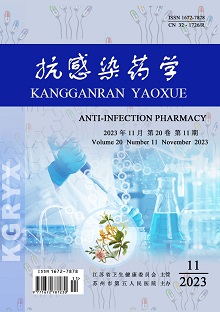HE Jia-jia, LI Jin-liang, YI Yu-guang, WU Jun-bo
Objective: To analyze the rational use of antibacterial drugs in neurosurgical patients during perioperative period in a hospital, and to provide reference for the rational use of antibacterial drugs in clinical surgical patients. Methods: 254 surgical patients admitted to Neurosurgery Department of Pingxiang No. 2 People's Hospital from January 2020 to January 2023 were selected as the research subjects. Information on varieties, timing, and course of prophylactic antibacterial drugs in patients during perioperative period was collected, and the rational use of antibacterial drugs in patients during perioperative period was analyzed according to relevant standards. Results: Among 254 surgical patients, 141 had prophylactic use of antibacterial drugs during perioperative period, with a usage rate of 55.51%; among the drugs, cefazolin (71 cases, 50.35%) and cefuroxime (44 cases, 31.21%) were most commonly used. The timing of medication was mainly 0.5-1 hour before surgery (122 cases, 86.52%), and the course of medication was mostly less than or equal to 24 hours (98 cases, 69.50%). The results of rational drug use reviews showed that there were many unreasonable situations in use of antibacterial drugs by patients, mainly in overlong course of medication (43 cases, with the irrational use rate of 30.50%), followed by improper selection of drug varieties (26 cases, with the irrational use rate of 18.45%) and improper timing of administration (19 cases, with the irrational use rate of 13.48%). Conclusion: There is much irrational use of antibacterial drugs in neurosurgical patients during perioperative period in the hospital, mainly in course of medication, selection of varieties, and timing of administration. The Hospital should strengthen the management of clinical antibacterial drug use to improve the level of rational drug use in clinical practice.
